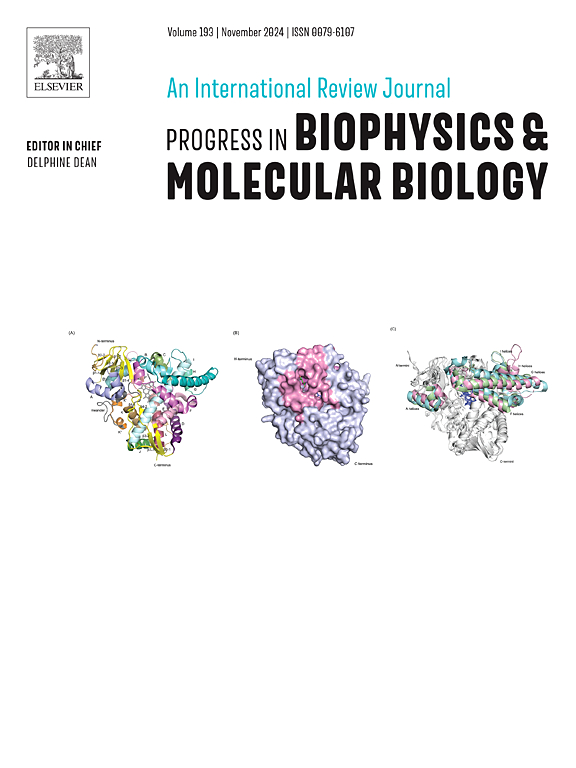磷脂酰乙醇胺结合蛋白(PEBP)家族在多种疾病中的作用:机制和治疗潜力
IF 4.5
3区 生物学
Q2 BIOCHEMISTRY & MOLECULAR BIOLOGY
Progress in Biophysics & Molecular Biology
Pub Date : 2025-04-10
DOI:10.1016/j.pbiomolbio.2025.04.002
引用次数: 0
摘要
由于PEBP2和PEBP3的信息有限,本文重点关注磷脂酰乙醇胺结合蛋白(PEBP)家族蛋白,详细介绍了PEBP1和PEBP4在细胞信号通路和病理谱中的研究,包括各种癌症、代谢紊乱、免疫疾病和一部分器官特异性疾病。它概述了PEBP1和PEBP4调控重要信号通路的机制,这些信号通路对细胞增殖、凋亡和转移等过程至关重要。最近的进展表明这些蛋白在病理生理中的作用及其作为未来治疗靶点的潜力有了进一步的了解。研究结果表明,PEBP1和PEBP4对不同疾病病程的影响强调了它们在更深入的医学研究和新的临床靶向治疗方面的潜力。本文章由计算机程序翻译,如有差异,请以英文原文为准。

The role of phosphatidylethanolamine-binding protein (PEBP) family in various diseases: Mechanisms and therapeutic potential
This article focuses on the phosphatidylethanolamine-binding protein (PEBP) family proteins, detailing PEBP1 and PEBP4 due to limited information on PEBP2 and PEBP3, in cellular signaling pathways and research in a spectrum of pathologies, including diverse cancers, metabolic disorders, immunological diseases and a subset of organ-specific diseases. It outlines the mechanisms through which PEBP1 and PEBP4 regulate essential signaling pathways that are critical for cellular processes such as proliferation, apoptosis, and metastasis. Recent advancements have shown further understanding of these proteins' roles in pathophysiology and their potential as future therapeutic targets. The findings suggest that the impact of PEBP1 and PEBP4 on the course of different diseases has underscored their potential for more in-depth medical research and novel clinically targeted therapies.
求助全文
通过发布文献求助,成功后即可免费获取论文全文。
去求助
来源期刊

Progress in Biophysics & Molecular Biology
生物-生化与分子生物学
CiteScore
8.60
自引率
7.90%
发文量
85
审稿时长
85 days
期刊介绍:
Progress in Biophysics & Molecular Biology is an international review journal and covers the ground between the physical and biological sciences since its launch in 1950. It indicates to the physicist the great variety of unsolved problems awaiting attention in biology and medicine. The biologist and biochemist will find that this journal presents new and stimulating ideas and novel approaches to studying and influencing structural and functional properties of the living organism. This journal will be of particular interest to biophysicists, biologists, biochemists, cell physiologists, systems biologists, and molecular biologists.
 求助内容:
求助内容: 应助结果提醒方式:
应助结果提醒方式:


